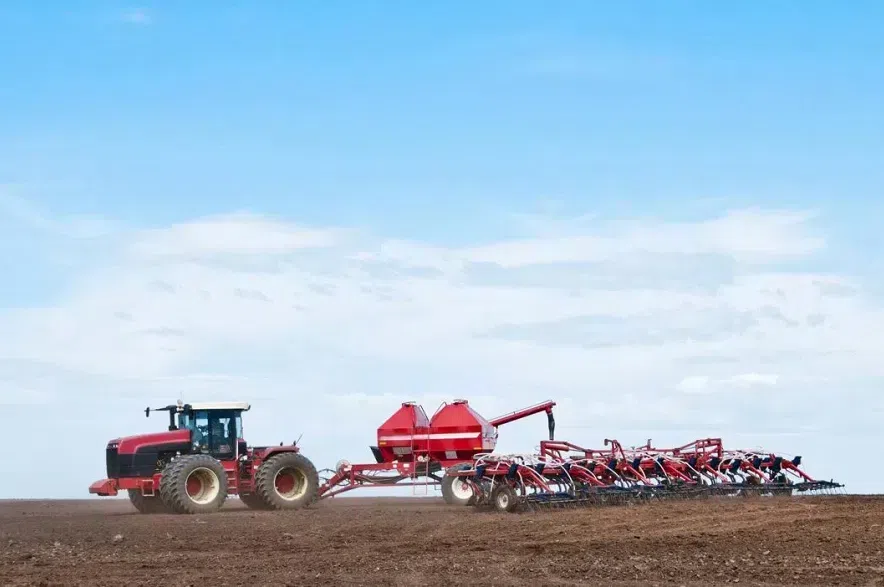Producers across Saskatchewan are already making good progress on spring seeding.
According to the Saskatchewan Ministry of Agriculture’s first Crop Report of the 2025 season, which covers the week ending on Monday, spring seeding is 18 per cent complete across the province, well ahead of the five-year average (10 per cent) and the 10-year average (12 per cent).
Read More:
- SaskPower shares tips to help farmers stay safe during seeding
- Sixteen Grains: Building a legacy of food, family and tradition
- Husband and wife duo wins Sask. Outstanding Young Farmers Award
“Despite multiple storms throughout the province in April, producers were able to get into their fields and make rapid progress over the last couple of weeks,” the ministry noted.
“The southwest region is the furthest advanced with 43 per cent seeded so far and the first seeded crops starting to emerge. The northwest and southeast regions are also making good progress with 15 per cent and 14 per cent of seeding complete, respectively. The west-central region is reporting 11 per cent seeding completion, and the east-central and northeast regions are both reporting nine per cent of seeding complete.”
Seeding for pulse crops is the furthest along, the ministry added, with 34 per cent of the lentil crop already in the ground, followed by field peas (31 per cent) and chickpeas (28 per cent). Durum is sitting at 33 per cent seeded, triticale is at 31 per cent, barley at 19 per cent and spring wheat at 13 per cent.
Field operations are moving quickly due to limited rainfall throughout much of the province over the past week, the ministry noted. The highest reported rainfall over the week ending Monday was in the Alida area, where 16 millimetres fell, followed by that Lafleche area, which received 12 millimetres of moisture.
“Although provincial topsoil moisture conditions are mainly at adequate levels, there are some areas in the province experiencing drier conditions,” the report noted.
“Livestock producers are hopeful for moisture in the coming weeks to help support water supplies and pasture conditions throughout the season.”
For crop land, topsoil moisture was rated at three per cent surplus, 78 per cent adequate, 16 per cent short and three per cent very short. In hayland, moisture levels were rated at one per cent surplus, 71 per cent adequate, 22 per cent short and six per cent very short. In pastures, topsoil moisture was sitting at one per cent surplus, 68 per cent adequate, 23 per cent short and eight per cent very short.
The report said six per cent of Saskatchewan’s pastures were in excellent condition as of late April, while 42 per cent were in good condition, 36 per cent were fair, 13 per cent were poor and three per cent were very poor.
Data from the provincial government indicated that spring runoff was 30 per cent below normal, 55 per cent normal and 15 per cent above normal. Most crop reporters indicated that the runoff would be sufficient to replenish dugouts and other bodies of water, but the report highlighted area that seems to be an exception.
“Notably within the southwest region, 52 per cent of respondents indicated that the amount of runoff may not be sufficient to replenish dugouts within their area,” the report noted.
With the warm, dry weather hitting the province, the ministry said producers will be busy over the next week seeding, spraying for weed control, harrowing and picking rocks.
“Livestock producers are busy with calving with some producers finishing up for the season. As cattle are being moved out to pasture, producers are also checking and fixing fences.”
The ministry reminded producers to make safety a priority during seeding, and keep a close eye out for overhead power lines while moving equipment.
According to SaskPower, there were 262 farm-related accidents involving power infrastructure in Saskatchewan last year.











